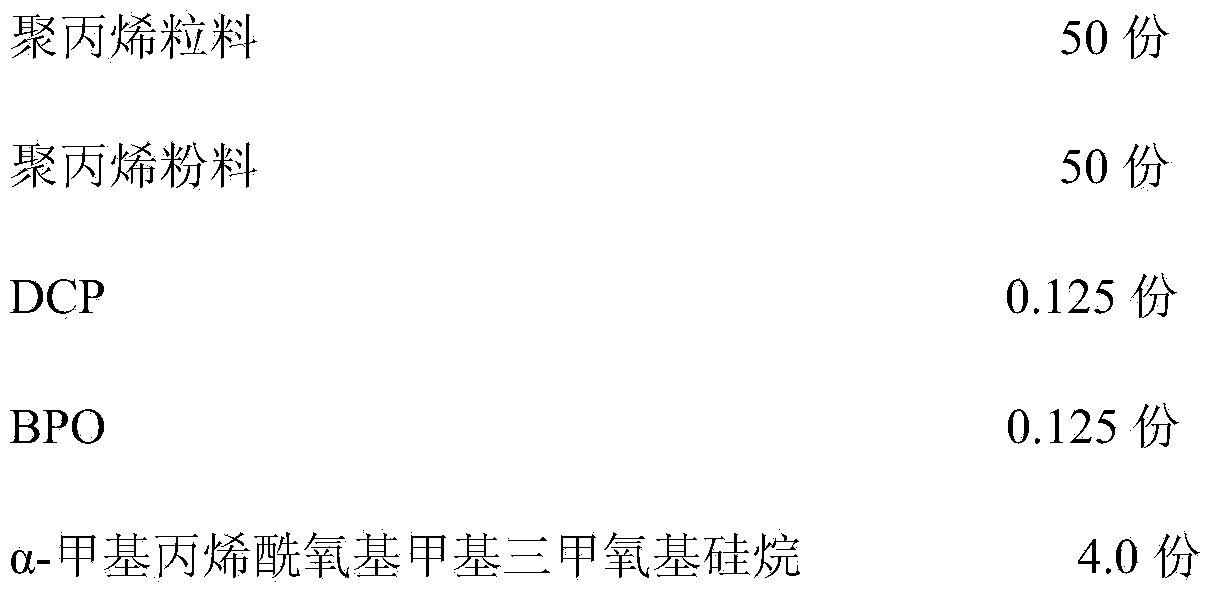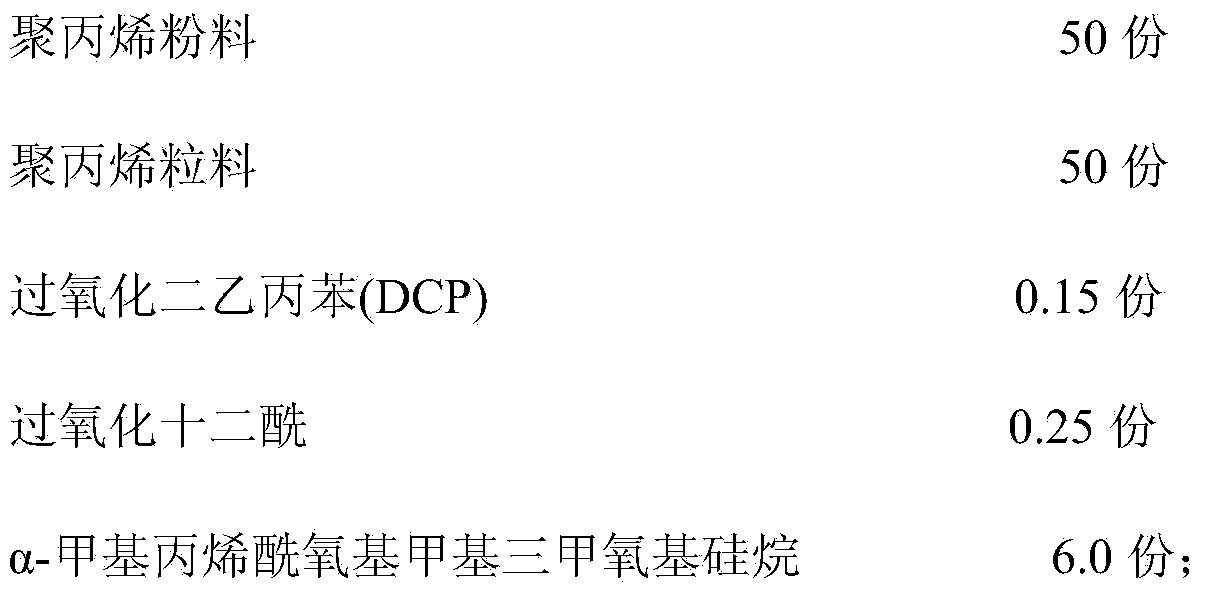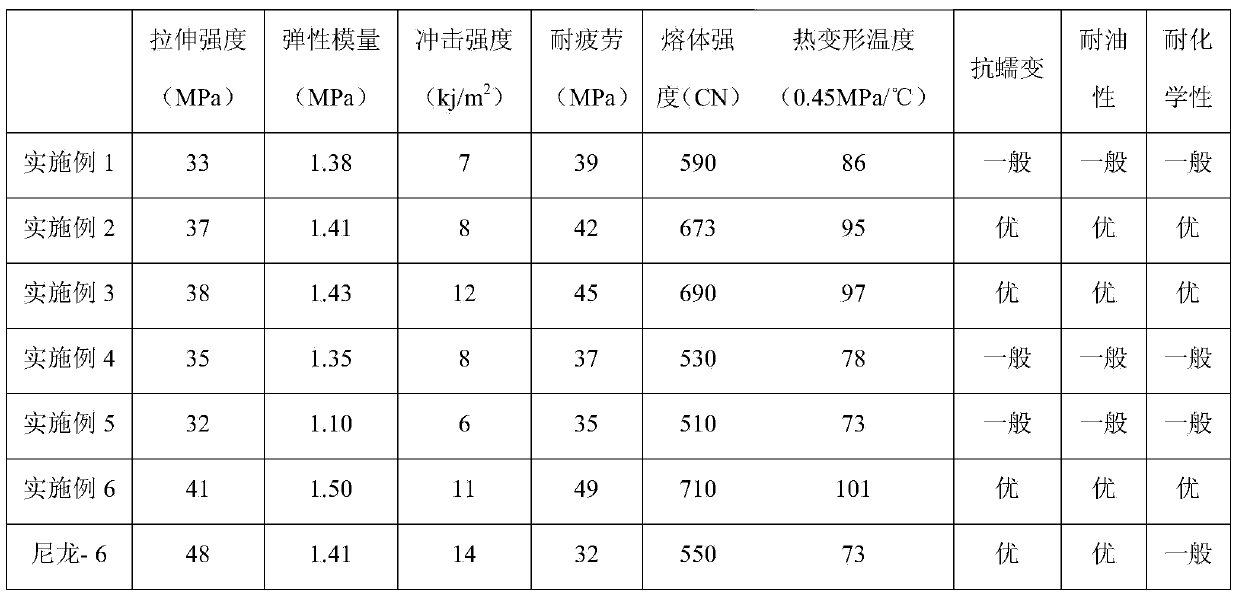Alpha-silane cross-linked polypropylene and application thereof as 3D printing material
A cross-linked polypropylene and silane cross-linking technology, applied in the field of cross-linked polypropylene, can solve the problems of reduced strength and slow cross-linking speed, and achieve the effect of low cost and important industrial application value
- Summary
- Abstract
- Description
- Claims
- Application Information
AI Technical Summary
Problems solved by technology
Method used
Image
Examples
Embodiment 1
[0039] Polypropylene pellets 100 parts
[0040] Diethylpropylbenzene peroxide (DCP) 0.20 parts
[0041] 4.0 parts of α-methacryloyloxymethyltrimethoxysilane;
[0042] Keep the temperature below 15°C and under the protection of nitrogen, mix the above components thoroughly, and then send them to a twin-screw extruder with an aspect ratio of 36 for extrusion, and the speed of the twin-screw extruder is 30r / min; The temperature of each zone is: 160-170°C in the feeding section, 190-200°C in the melting section, 190-200°C in the mixing section, 170-190°C in the exhaust section, 160-180°C in the homogenizing section, and the feeding speed is 15 kg / hour .
Embodiment 2
[0044] Polypropylene powder 100 parts
[0045] Benzoyl peroxide (BPO) 0.25 parts
[0046] 5.0 parts of α-methacryloyloxymethyltriethoxysilane;
[0047]Keep the temperature below 25°C and under the protection of nitrogen, mix the above components thoroughly, and then send them into a twin-screw extruder with an aspect ratio of 36 for extrusion, and the speed of the twin-screw extruder is 50r / min; The feeding section is 150-160°C, the melting section is 190-200°C, the mixing section is 190-200°C, the exhaust section is 170-190°C, the homogenization section is 160-180°C, and the feeding speed is 10 kg / hour.
Embodiment 3
[0049]
[0050] Keep the temperature below 15°C and under the protection of nitrogen, fully mix the above components, and then feed them into a twin-screw extruder with an aspect ratio of 36 for extrusion, and the speed of the extruder is 45r / min; Section 150-170°C, melting section 190-200°C, mixing section 190-200°C, exhaust section 170-190°C, homogenization section 160-180°C, and the feeding rate is 12 kg / hour.
PUM
 Login to View More
Login to View More Abstract
Description
Claims
Application Information
 Login to View More
Login to View More - R&D
- Intellectual Property
- Life Sciences
- Materials
- Tech Scout
- Unparalleled Data Quality
- Higher Quality Content
- 60% Fewer Hallucinations
Browse by: Latest US Patents, China's latest patents, Technical Efficacy Thesaurus, Application Domain, Technology Topic, Popular Technical Reports.
© 2025 PatSnap. All rights reserved.Legal|Privacy policy|Modern Slavery Act Transparency Statement|Sitemap|About US| Contact US: help@patsnap.com



